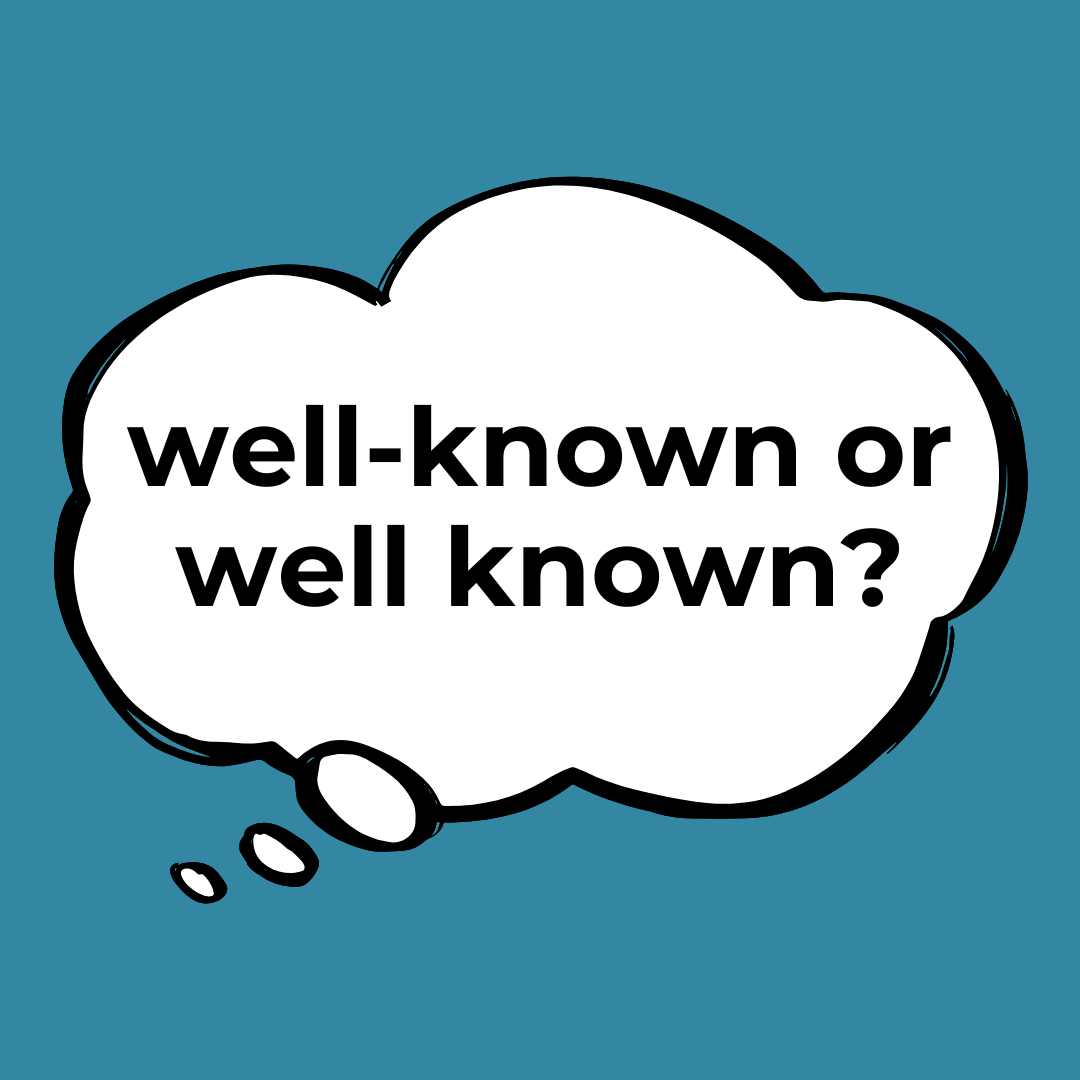Hello!
Before we get to today’s lesson, I’d like to share my latest freebie again, in case you missed it last week.
If you use English at work and if you want to sound more confident in meetings and other work conversations, this is for you.
It’s a free PDF download called “Phrases to sound confident in work meetings”.
It will give you 12 things to stop saying and 12 phrases to use instead so that you sound more confident. I even explain why it works!
So if you want to sound more confident when you speak English at work, get your free download here:
Please note, you’ll also be added to my “Confident English for Professional Women” newsletter list.
Now for the lesson!
Hyphens
How do you feel about punctuation in English? Or in your own language, for that matter?!
One of my least favourite punctuation marks is the hyphen!
Why? Because it’s difficult to know when you need one and when you don’t.
So that’s what we’re going to look at today.
Here are the rules for using hyphens.
1. Numbers
When we write a number as a word, we use a hyphen. For example:
twenty-two
a hundred and eighty-nine
But it’s actually more common for us to write these as numbers anyway: 22 and 189.
2. Prefixes
Sometimes we use hyphens with certain prefixes. (Not all prefixes.) For example:
non-violent
self-employed
ex-husband
vice-president
We use a hyphen when the prefix ends with the same vowel as the word, to avoid double letters. For example:
re-enter (reenter looks wrong)
co-owner
Or to avoid confusion with another word. For example:
re-sign (different from resign)
re-cover (different from recover)
but other re- words have no hyphen: reread and recycle etc.
3. Compound nouns
A number of compound nouns use hyphens. For example:
father-in-law
runner-up
well-being
know-how
editor-in-chief
mother-of-pearl
The number of compound nouns with a hyphen is small compared to the number which are one word (sunglasses, notebook, postbox) or two words (ice cream, washing machine, seat belt).
Even native speakers find it difficult to remember which compound nouns are one word, which are two words and which are hyphenated!
Of course, it doesn’t matter when you speak! When you write, you can always use a dictionary to check.
If you use a spelling checker or grammar checker, try typing it as one word and it will tell you if you’ve made a mistake. If you type it as two words, it might not be highlighted as a mistake even though it is.
Sometimes, there are two options. For example, coworker and co-worker are both correct.
And sometimes, things change over time. I still remember when we wrote e-mail but now we write email as one word.
Some compound nouns come from phrasal verbs and they are often written with a hyphen. Perhaps this is to help us see the difference between the noun and the verb. For example:
make-up
check-in
warm-up
Not always though. Some are written as one word, like breakdown and checkout.
4. Compound modifiers
Modifiers are words like adjectives that give more information about a noun.
Many compound modifiers are hyphenated. For example:
free-range eggs
front-page news
a high-risk investment
a low-paid job
But sometimes it depends on the position in the sentence. This is where things get difficult and complicated, even for native speakers.
If you’re not sure, use a good English-English dictionary with plenty of example sentences so you can check.
Occasionally, there are compound modifiers which are hyphenated before a noun but not hyphenated after a noun. For example:
This is high-quality paper.
This paper is high quality.
He’s a well-known artist.
The artist is well known.
With numbers, be careful with -s. For example:
They have a two-year-old child. (No -s)
The child is two years old. (There’s an -s.)
Let’s take a five-minute break.
Let’s break for five minutes.
Most compound modifiers are always hyphenated, wherever they are in a sentence. For example:
He has a part-time job.
He’s working part-time.
He’s a good-looking man.
The man is good-looking.
This is an old-fashioned hat.
This hat is old-fashioned.
This is state-of-the-art technology.
This technology is state-of-the-art.
Here are some more situations where we use hyphens to create modifiers.
I like reading science fiction.
but
I like reading science-fiction novels.
Three quarters of the cake has been eaten.
but
A three-quarter-length sleeve.
I’ve never seen this footage before.
but
This never-before-seen footage…
We often use hyphens with modifiers containing present and past participles. For example:
a strange-looking dog
a hard-working student
a never-ending story
sun-dried tomatoes
a high-pitched voice
a custom-made dress
a hand-written note
5. To avoid ambiguity
Finally, we sometimes use hyphens when a sentence is ambiguous. In other words, the meaning is not clear without the hyphen.
When I was at school, my teacher gave us this example. If I say “pink iced cakes”, does this mean the cakes are pink or the icing is pink? The meaning is not clear.
But if I write “pink-iced cakes”, the reader knows the icing is pink.
Here’s another example:
A “small-animal hospital” is a hospital for small animals.
But a “small animal hospital” might mean the hospital is small, not the animals.
Well, writing this has actually helped me feel more confident about hyphens! I hope it helps you too!
See you next time!
Katie 💙
PS If you enjoyed reading this and you’re not already getting weekly emails, you can sign up here:



Oh yes, these wretched little hyphens are tricky, and I always get tied up in knots trying to explain to students the 'rules', whatever they may be.